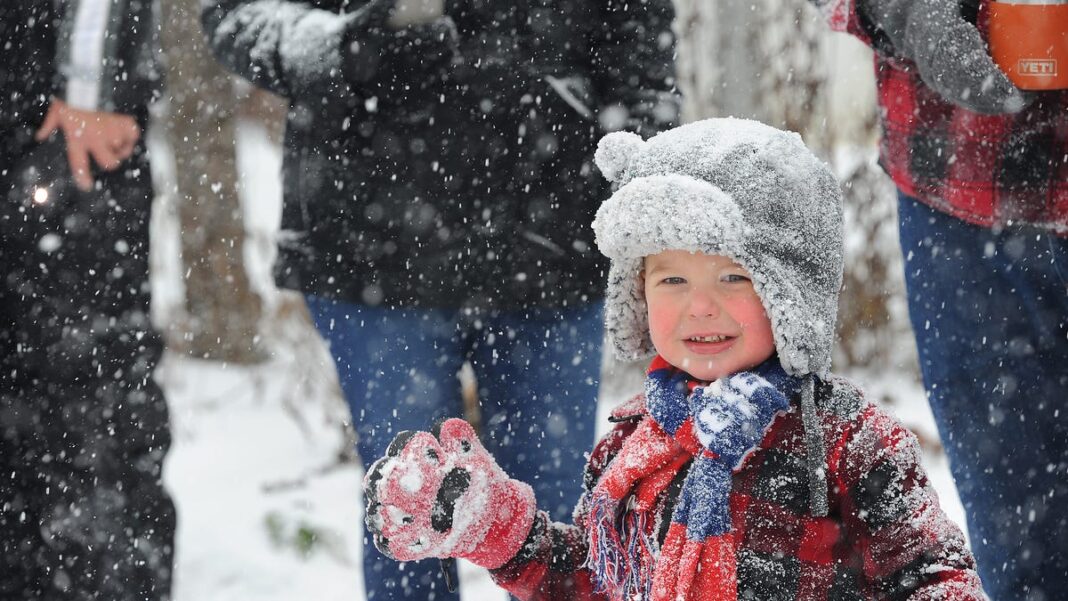Brrrutal: How long will this cold last? Your winter weather questions answered
Feeling chilly yet?
The intense cold wave sweeping across much of the eastern United States is expected to persist and may even worsen by the middle of the week, meteorologists reported on Monday.
“A new wave of frigid air will arrive by the end of the week, affecting areas from the upper Midwest to the Great Lakes, and extending southward to the Tennessee Valley and Southeast,” noted AccuWeather meteorologist Paul Pastelok in an online update.
It’s been years since the start of meteorological winter (December 1) has been as cold as it is this December, according to AccuWeather.
So what’s causing these frigid temperatures? Is it linked to the polar vortex? And what could this mean for the rest of the winter? Here’s the information you need:
Cold air from Russia
This cold snap has its origins on the other side of the globe, experts claim.
“This cold air primarily comes from Siberia—thanks to a phenomenon known as cross-polar flow that brings air down from Siberia, across the Arctic, and then south into Canada and eventually the eastern United States,” explained meteorologist Judah Cohen of Atmospheric and Environmental Research in an email to YSL News on Monday.
AccuWeather’s Pastelok supported this view, stating that the Siberian air remained “fresh” and cold on its journey over the North Pole, maintaining its chill all the way to the southern states.
Scott Kleebauer from the Weather Prediction Center added that the coldest winter outbreaks in the U.S. often include air directly from Siberia, and this is no exception.
Is the polar vortex to blame for the cold?
“I believe it is indeed linked to the polar vortex,” Cohen stated to YSL News. He clarified that the polar vortex is currently elongated, like a stretched rubber band, which leads to the cross-polar flow in the stratosphere. This flow is reflected in the lower levels of the atmosphere and influences the jet stream that shapes our weather.
Could a white Christmas be possible?
A white Christmas might be a possibility for some areas—perhaps.
“I anticipate that a stretched polar vortex will occur in the latter half of December. While I expect milder conditions across the U.S. around mid-month, I also foresee a return to colder, snowier weather as we get closer to the holiday season,” Cohen stated.
“Many readers may be curious if they’ll experience a white Christmas. While I can’t specify where it might snow three weeks from now, I am feeling more optimistic that certain cities in the northeastern U.S. could see a white Christmas more than I have in a while.”
What does the rest of winter look like?
People are curious whether this Arctic chill means that the rest of the winter will be just as cold. “That’s the million-dollar question!” Cohen remarked to YSL News. “My brief answer is maybe. Typically, these elongated polar vortex patterns can repeat over time, and in rare instances, this can lead to extremely cold conditions lasting throughout the winter. The last instance of this was in 2013-14, which was a notably cold winter.”
“However, more commonly following a stretched polar vortex, it either strengthens, resulting in a milder winter overall, or this condition can serve as a precursor to a more significant disruption of the polar vortex occurring in January or February.”
If this were to happen, we could see a mild period in early January succeeded by a prolonged cold spell later in January and/or February,” Cohen added.
Overall, the Climate Prediction Center’s latest winter forecast indicates that despite the current chill in the east, a milder-than-normal winter is still likely for the eastern and southern regions of the U.S.
Seeking some warmth? Head West
The same jet stream pattern causing the chill in the East may allow much of the West to be warmer than usual at least until mid-December, according to Weather.com’s online forecast. After that, areas from the Desert Southwest to the Southern Plains are expected to continue to experience above-average temperatures for the remainder of the month.

